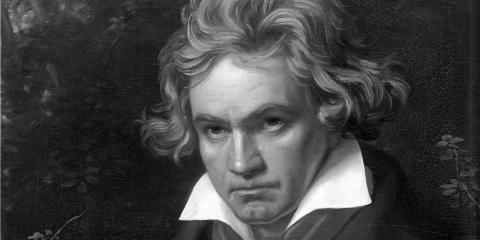MCO’s Beethoven Piano Concerto No 4 can be heard via live stream on Thursday 30 July at Melbourne Digital Concert Hall.
Wolfgang Amadeus Mozart
Divertimento No 1 in D major K 136
Many of the dictionary and encyclopedia entries on Wolfgang Amadeus Mozart (1756–1791) start with the simple statement that he was an “Austrian composer, keyboard‐player, violinist, violist, and conductor.” He was indeed all of these, but it fails to capture anything of the remarkable composer and his exceptional music that is so much a part of our musical life.
The terms divertimento, serenade, notturno and cassation have been used at times interchangeably for a work with a collection of movements that were primarily designed for the entertainment of the listeners and the players. The terms were often associated with music for outdoor entertainment.
The Divertimento in D major is the first of three works often referred to as the “Salzburg” Symphonies. They stand alongside the numbered symphonies and were composed in Salzburg in early 1772 around the time Mozart was composing Symphonies Nos 14 and 15. The works are for strings only and in three movements: fast-slow-fast.
This Divertimento’s opening Allegro is in sonata form. It is contrasted with the delightful and elegant Andante that leads to a brilliant Presto final movement. The 16-year old Mozart was displaying brilliance of invention and virtuosity.
Ludwig van Beethoven
Piano Concerto No 4 in G major, Op 58 (arranged for piano and string quintet)
The first decade of the nineteenth century was one of intensive productivity for Ludwig van Beethoven (1770–1827). From 1795 to 1809 he composed most of his concertos and works for solo instrument and orchestra. And this in addition to the myriad of other works including symphonies, instrumental sonatas, and chamber works.
The Piano Concerto in G major was composed between 1804 and 1806. It was premiered at a private concert at the home of Prince Franz Joseph von Lobkowitz in March 1807 and premiered publicly at the Theater an der Wien in December 1808. The work was dedicated to the Archduke Rudolf.
Paul Schiavo, writing in 2015, said “if the Fifth is an emperor, the Piano Concerto No. 4 in G major is the queen among Beethoven’s concertos. Its opening, while not so demonstrative as that of the Fifth, is no less regal in character, and its music combines grace and depth of feeling befitting a sovereign.”
The work opens in an unprecedented manner with the soloist stating a meditative account of the main theme. This is followed by the orchestra playing the full exposition of the themes. The Allegro moderato movement unfolds as a constant weaving of the piano with the orchestra as the themes develop. In the Andante con moto we see a dramatic dialogue between the strident orchestral writing and lyrical piano parts. This movement is a beautifully poetic and expressive lament. The concluding rondo, marked Vivace, is spirited but not in any way overstated. It is elegant and humorous and conveys a sense of refined exuberance.
Interestingly, Michael Steinberg talks of this concerto being “Beethoven’s most quietly scored piano concerto” and as such lends itself to the arrangement for reduced chamber forces. Throughout the nineteenth century arrangements of concertos in the tradition of the piano reduction of the orchestra were extremely popular. These reductions often involved a limited number of string parts incorporating the wind and brass lines. In addition to the Beethoven concertos, arrangements exist of many composers, including Mozart and Chopin. These allowed the works to be performed in many smaller venues rather than the concert hall or palace.
© David Forrest 2020

